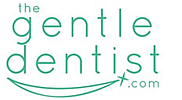Sleep Disorders - Shelby Township
Oral Appliance therapy for the treatment of Obstructive Sleep Apnea
50-70 million Americans suffer from chronic sleep disorders, including snoring and Obstructive Sleep Apnea but only 15% know about it. Excessive Daytime Sleepiness alone costs $150 billion annually in lost productivity and mishaps, and another $48 billion in medical costs related to motor vehicle accidents that involve drowsy drivers. Almost 20% of all serious car crash injuries are associated with driver Excessive Daytime Sleepiness, independent of alcohol effects.
Screening tests such as the Epiworth Sleepiness test can be completed to assess the risk of having sleep apnea. (You can call our office for a copy if there are any concerns about snoring or sleep apnea.) Sleep apnea is evaluated and positively diagnosed by having a sleep study done. The patient spends the night in a sleep lab and is hooked up to machines with tiny measuring devices that measure breathing, brain wave, and muscle activity. This “lab” is an extremely comfortable bedroom that is like being at home or in a hotel room.
Obstructive sleep apnea (stoppage of breathing) occurs when the throat area closes down if excessive tissue encroaches upon the airway space. If the breathing is stopped for more than 10 seconds it is called an episode. Sleep apnea is quantified: Mild-5-15 episodes per hour, Moderate:16-30, Severe: greater than 30 per hour. The more episodes one has correlated to more severe problems.
These sleeping disturbances have been directly or indirectly related to:
- Daytime sleepiness, un-refreshing sleep, snoring, insomnia, headaches, short term memory loss, decreased sex drive and bed wetting in adults.
- High blood pressure-Chronic adrenaline release to wake the person increases blood pressure over time.
- Diabetes
- Heart attack. The heart is constantly stressed and doesn’t achieve a prolonged slow down that is experienced during restful sleep.
- Stroke-increased cerebral pressures weaken the blood vessels in the brain.
- Gastric Esophageal Reflux (GERDS)-negative pressure forces acid up the esophagus and presents acid into the mouth and throat.
- Weight gain and low energy.
People who are at a higher risk for obstructive sleep apnea include:
- Obesity-This is the primary factor. The air space is encroached upon as one gains weight. By losing weight many can help themselves out. A pear-shaped body is better than an apple-shaped body.
- Neck size- Males with neck sizes greater than 17” and Females with neck sizes greater than 15” are at a higher risk
- Men are more likely than women (3:1 ratio)
- Postmenopausal women are 3x more likely than pre-menopausal.
- Age- Those who are older than 65 are 2-3x more likely to have apnea than those between 35-65. This is less severe problems in the older patient.
- Small lower jaws restrict the airway since there is more tissue in the region. Surgery to bring out the lower jaw is effective in these people.
After a positive diagnosis of sleep apnea the sleep physician will discuss the following treatment options:
- If the sleep apnea is due to obesity the physician will recommend a weight loss and exercise program. This may include bariatric or gastric bypass surgery.
- The cPAP is a mask that provides pressure to fill the lungs and prevents the airway from collapsing. This is usually the first and most effective option. Unfortunately, there is relatively low compliance that goes along with this device. Only about 40% of people who were prescribed a cPAP use it long term due to the presence of a mask or nose piece over the face. Many find it difficult to use.
- If the cPAP is not well tolerated then a durable medical device that positions the lower jaw forward to open up the airway may be prescribed by the sleep physician. This dental device actually is more comfortable and much easier to use than a cPAP machine. And because it is better-tolerated people are much more likely to use it on a long term basis. Research has shown that it is used over 60% of the time and because of the better compliance rate, this is often the recommended treatment for mild to moderate sleep apnea. Of course, this must be discussed with the sleep physician or primary care physician as they are the professionals to prescribe this oral appliance. This should be fabricated only by a qualified dentist who has a full understanding of the jaw, the bite and the effects of obstructive sleep apnea treatment.
- Surgery to open up the airway by a procedure called an oPPP. Unfortunately, this is only about 30% successful and at times the surgery has made the situation worse off.
The Gentle Dentist
15055 22 mile Rd. Ste #2
Shelby Township, MI 48315
